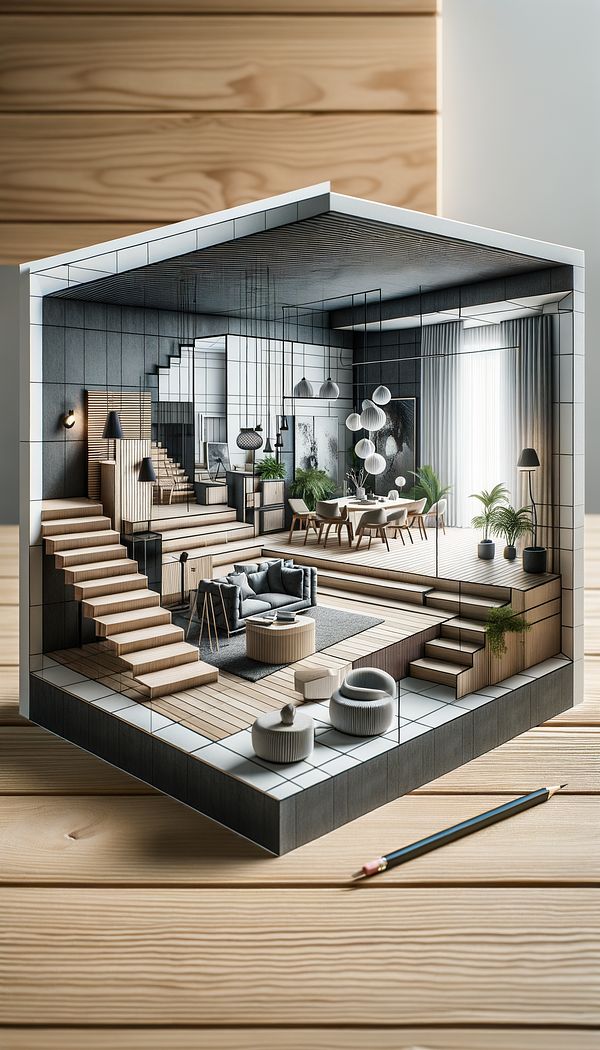What is Perspective?
Perspective is a technique that creates the illusion of depth and space in design.
Description
When discussing interior design, perspective isn’t just about the literal angle or view from which you see a room, but also the techniques used to create the illusion of depth and space, making interiors appear more expansive, intimate, or dynamic. This concept is rooted in the principles of geometry and visual perception, allowing designers to manipulate how a space is perceived.
Perspective can be achieved through various means such as the strategic placement of furniture, use of color and patterns, and the careful layout of lighting and decorative objects. Proper use of perspective can transform a flat, two-dimensional space into one that feels three-dimensional, offering a more immersive and engaging experience. This is particularly important in spaces that are limited in size, where creating the illusion of depth can make the area feel more expansive than its physical dimensions would suggest.
Furthermore, perspective plays a crucial role in photography and the presentation of interior designs. High-quality images that effectively use perspective can showcase a design’s depth, detailing, and spatial relations, providing a more comprehensive understanding of the space.
Usage
In a small living room, a designer might use perspective by selecting low-profile furniture and implementing a monochromatic color scheme to create the illusion of a larger space. In another example, an interior photographer might choose a certain angle and lens to capture the room in a way that emphasizes depth and the interplay of light and shadow.
FAQs
-
How does perspective affect the perception of space?
Perspective affects the perception of space by manipulating visual cues to create the illusion of depth, making a space appear larger, more open, and dynamic.
-
Can perspective be used in any room?
Yes, perspective can be applied in any room regardless of its size or function, helping to optimize the perceived space and atmosphere.
-
What tools can be used to achieve perspective in interior design?
Tools such as strategic furniture placement, color and pattern use, lighting arrangement, and the inclusion of certain decorative elements can help achieve perspective.
Practical Application
To effectively apply perspective in interior design, start by identifying the focal points of a room and use them as anchors for spatial depth. Employ the use of leading lines, contrasting colors, and varying textures to guide the eye and create layers. Consider also the impact of lighting, both natural and artificial, to enhance these effects. Remember, the goal is to balance the visual weight across the space, making it feel both cohesive and spacious.
-
Back OrderA back order is an order for an item that is temporarily out of stock.
-
Console TableA console table is a narrow, long table typically placed against a wall.
-
PerspectivePerspective is a technique that creates the illusion of depth and space in design.
-
FF&EFF&E refers to the movable furniture, fixtures, and equipment within a building.
-
CovingCoving is a decorative molding applied at the junction of walls and ceilings.
